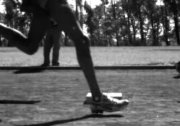Don't Forget the SLOW Speed
What are the key elements of a successful exercise program? I credit John Wood for one of the best enumerations of these elements:
- Expect to push yourself – effort must be a part of the program
- Begin training at a manageable level and build up from there
- Always train in a safe and productive manner
- Keep reminding yourself of the overall goals
- Make adjustments as necessary
- And, most importantly, NEVER give up!
You must continue to do the work in order to make progress.
Now, what is missing in this workout recipe? SPEED.
When you are learning to play a scale on the piano or guitar you must make the movements slowly. This is how the body and mind merge in order to make a physical movement pattern repeatable. Practicing any technique at a high speed with flaws in the movement pattern reinforces the sloppy movement pattern. You will get faster at a bad movement! And, guess what. When you are practicing in this manner with heavier and heavier weights you are well on your way to your next injury!
Slow motion practice is applicable not only to musical instruments but to all movement skills: typing, throwing, hitting, kicking, jumping, diving, running, falling, etc. Practicing in slow motion (and even in ultra-slow motion) is simply the best way to refine your skills and help build the connections from your brain to your muscles that will allow you to move with precision. These neurological connections are actually, physically enhanced by practice through a process called myelination. For a wonderful description of how the body develops improved movement skills I highly recommend “The Talent Code” by Daniel Cole.
Every time I force students to practice in slow motion (and I mean force!) they complain of the same thing: “This is hard!” Obviously, it is not difficult in a cardiovascular sense. They are not breathing heavily. What is so hard about it? It requires brain power. And, the brain is the most energy greedy organ in the body using about 20% of all calories consumed. Practicing in slow motion requires a conscious and deliberate connection of the mind with the body’s movement skills. This uses a lot of energy. But, the rewards are worth it!

All high-speed, complex movement skills are beyond the conscious control of the mind. When we knock a glass off of the counter and try to catch it before it hits the ground we don’t think. We just move. And, this movement pattern is the one that we have learned through years of practice. Most of the movements we perform throughout the day are just like this. They are automatic.
Improve the quality of your movements in slow motion and your automatic movements will also improve. Improving your movement patterns will make you move like a natural athlete, will reduce the wear and tear on your body, will reduce your injuries, will make you feel better, and will slow the ageing process.
|